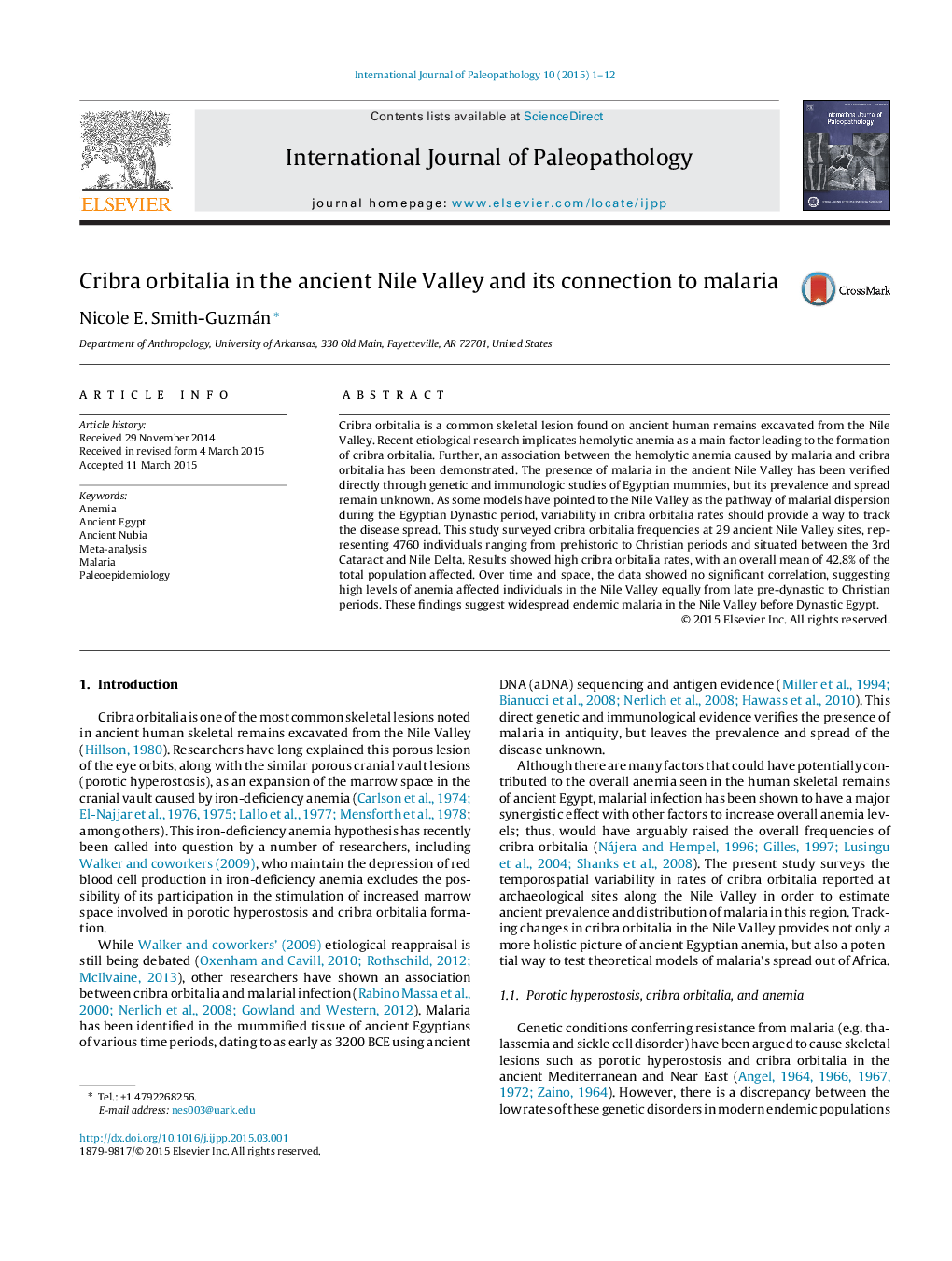| Article ID | Journal | Published Year | Pages | File Type |
|---|---|---|---|---|
| 101316 | International Journal of Paleopathology | 2015 | 12 Pages |
Cribra orbitalia is a common skeletal lesion found on ancient human remains excavated from the Nile Valley. Recent etiological research implicates hemolytic anemia as a main factor leading to the formation of cribra orbitalia. Further, an association between the hemolytic anemia caused by malaria and cribra orbitalia has been demonstrated. The presence of malaria in the ancient Nile Valley has been verified directly through genetic and immunologic studies of Egyptian mummies, but its prevalence and spread remain unknown. As some models have pointed to the Nile Valley as the pathway of malarial dispersion during the Egyptian Dynastic period, variability in cribra orbitalia rates should provide a way to track the disease spread. This study surveyed cribra orbitalia frequencies at 29 ancient Nile Valley sites, representing 4760 individuals ranging from prehistoric to Christian periods and situated between the 3rd Cataract and Nile Delta. Results showed high cribra orbitalia rates, with an overall mean of 42.8% of the total population affected. Over time and space, the data showed no significant correlation, suggesting high levels of anemia affected individuals in the Nile Valley equally from late pre-dynastic to Christian periods. These findings suggest widespread endemic malaria in the Nile Valley before Dynastic Egypt.
